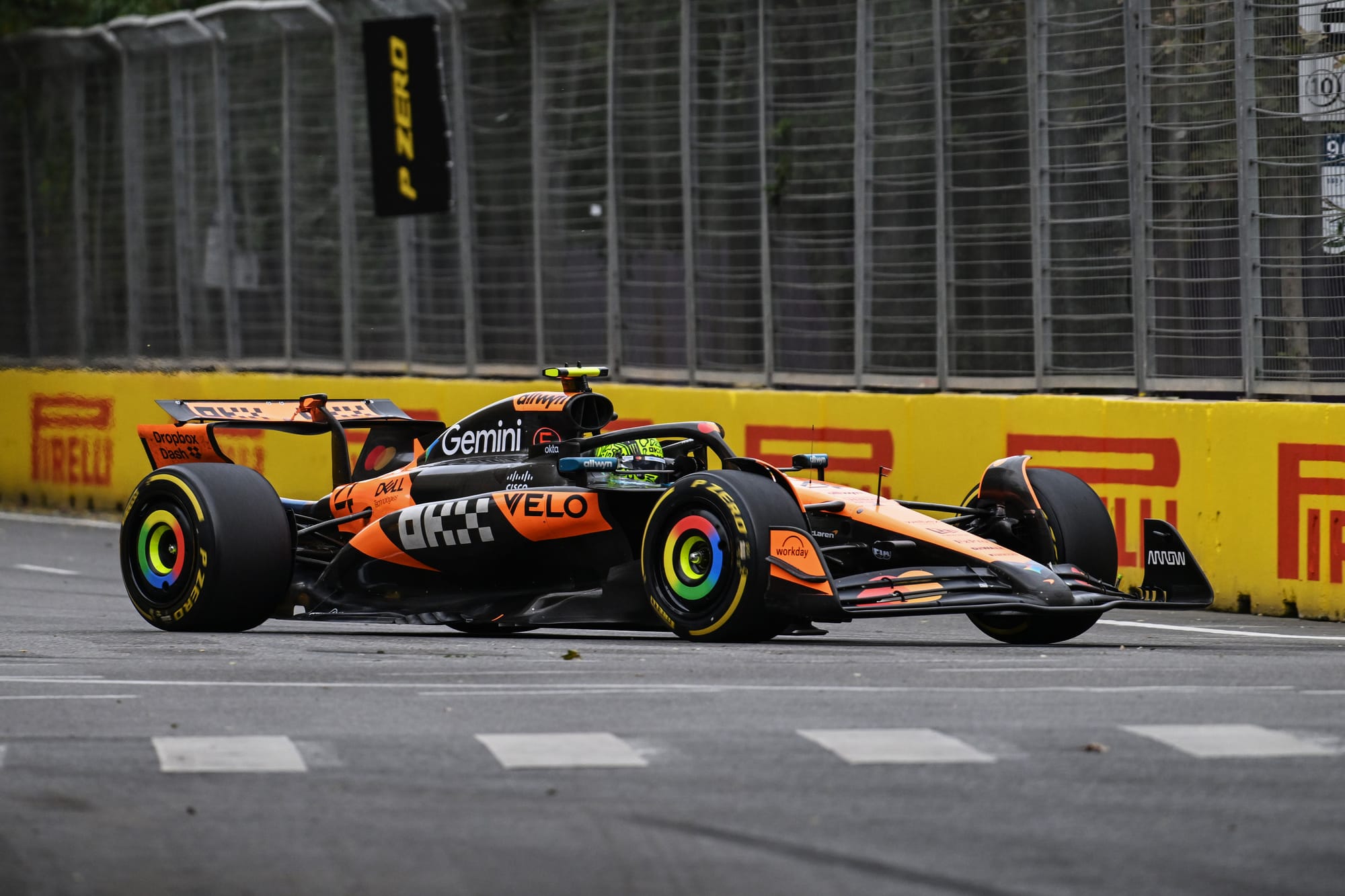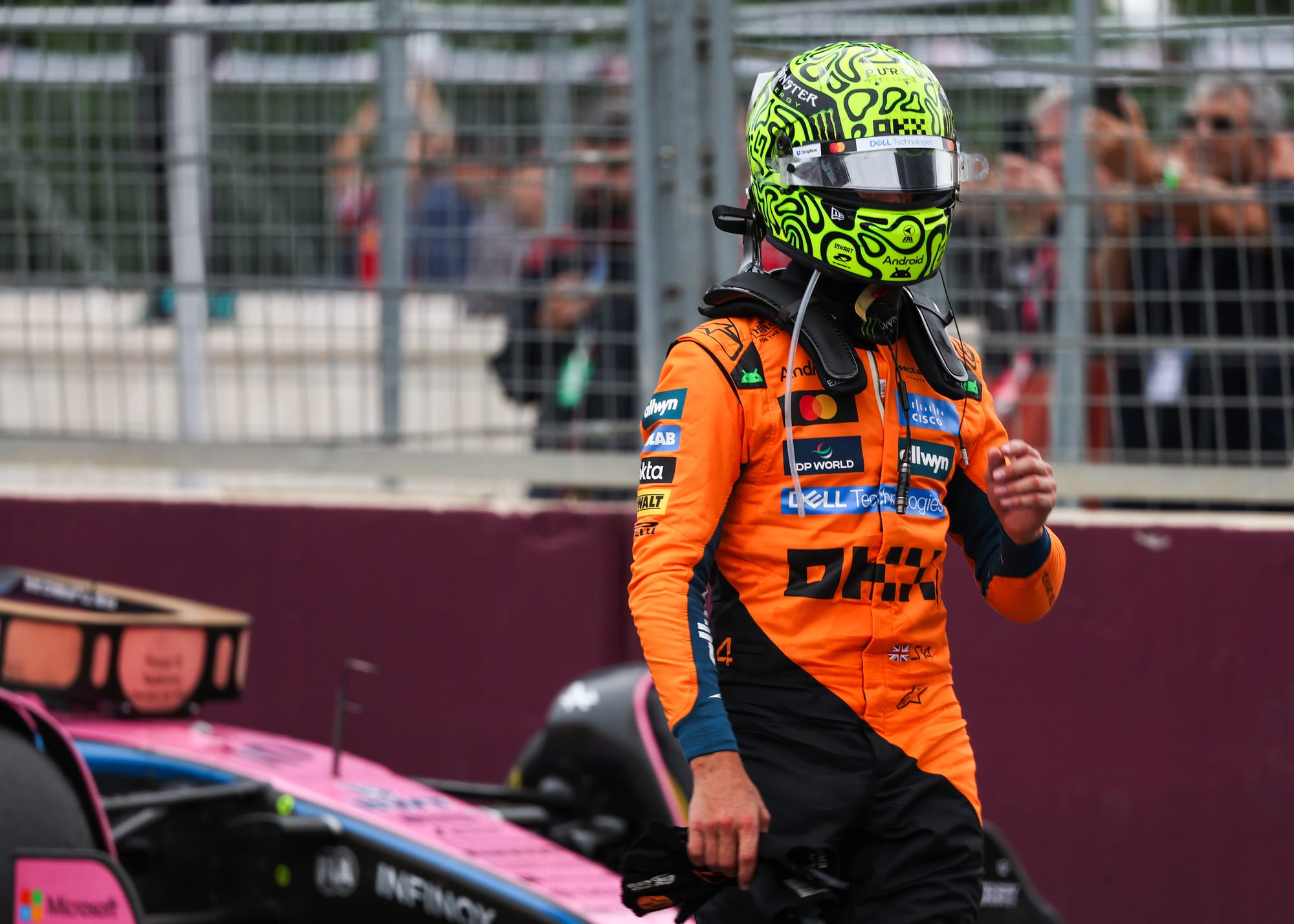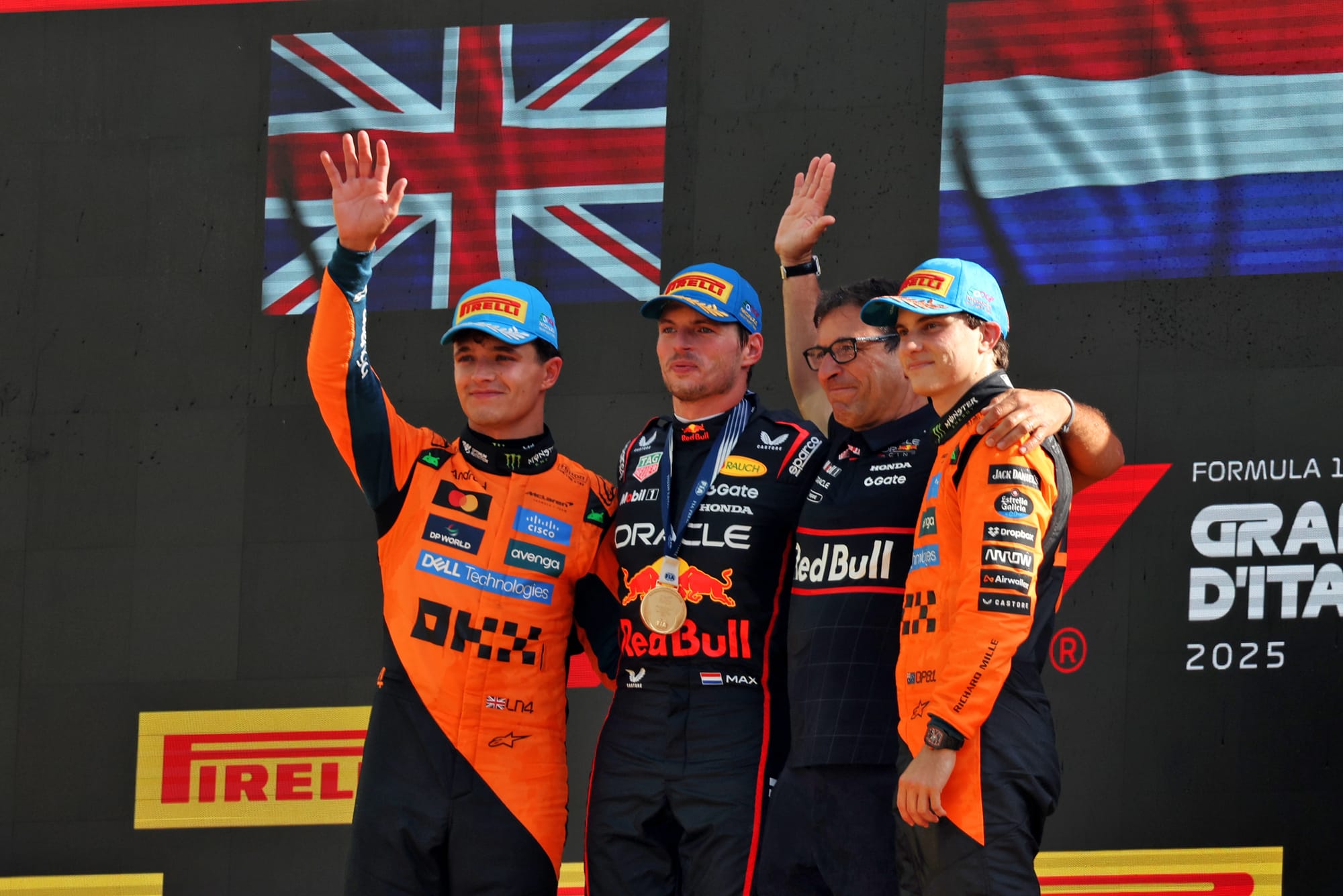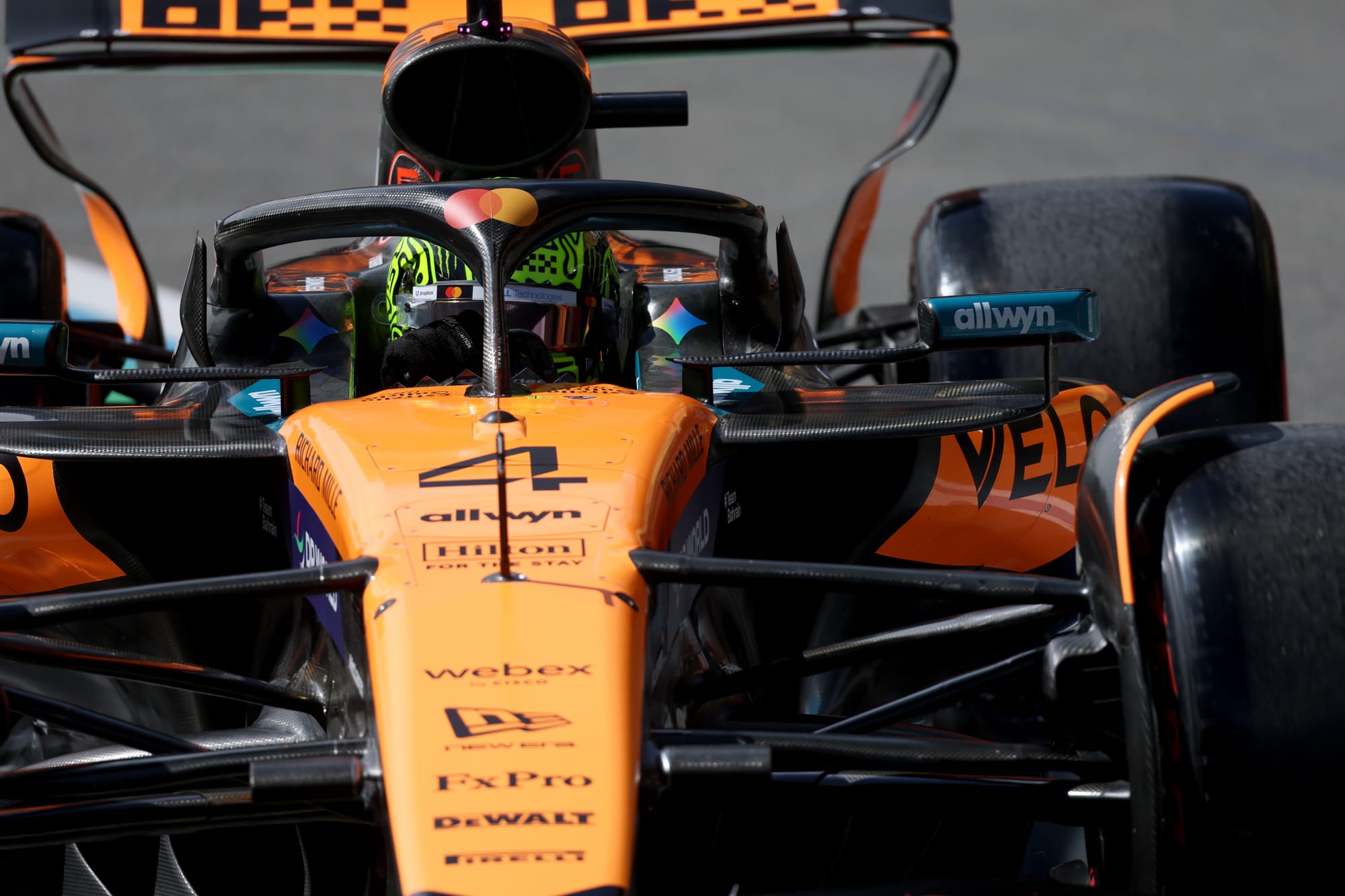Fighting for a world championship is the ultimate exam for a Formula 1 driver. Forget championship wins in junior categories or grand prix victories; nothing challenges their skillset more than the intensity of a close title battle.
Every aspect of your game is stress-tested, tiny weaknesses are brutally exposed and mistakes that would go unnoticed in the midfield become major stories. That’s what both McLaren drivers have been subjected to for the past six months, particularly Lando Norris.
Oscar Piastri has generally stood up well to this scrutiny, putting together a robust season. Azerbaijan can be written off as an aberration owing to it being so out of kilter with everything we’ve seen from him, and those who suggest he is crumbling under pressure need far more than one nightmare weekend as evidence given the quality of his season so far.
The main doubt hanging over Piastri is whether he can match the peak speed of his team-mate.
Norris is a more interesting question.
Taken in isolation, most concerns about his Baku weekend can be explained away. It was a missed opportunity given Piastri’s failure to score, but anyone can clip the wall and lose their opportunity to complete crucial long runs in FP1, going first in the mini-session at the end of Q3 on a track in bad condition will always be a disadvantage, anyone can get caught out at a safety-car restart and he was far from the only driver to get stuck in a queue during the Azerbaijan Grand Prix.
However, add those together and then combine with what we’ve seen from him this season, as well as the hints of his prior F1 career, and it supports the conclusion that there is a weakness in seizing every opportunity.

Norris is an exceptionally fast driver, one of exquisite feel and artistry, who gives little or nothing away to his rivals when it comes to pace. However, that’s just one part of being a championship-winning F1 driver and there’s no doubt that Norris has failed to translate that into the results he should have.
Since McLaren’s great leap forward in Miami last year, he’s won nine out of 36 grands prix (plus two out of nine sprints). It’s wrong to say the McLaren has been good enough to win all of them, but he undoubtedly could have won more.
The evidence of 2024, when he had the machinery to force himself into title contention but never did, was relevant albeit inconclusive. He was unable to put together the bludgeoning consistency required, thanks to occasional errors and sometimes losing out in battle. The caveat was that this was a title shot that didn’t exist until the season was well-advanced, requiring not only McLaren to improve but also Red Bull to hit a developmental wall.
Once that happened, he was playing catch-up with confounding factors such as Ferrari’s resurgence and the occasional Mercedes strong weekend making sweeping all before him impossible. The question was, could Norris take that experience and coalesce into something even stronger in 2025?
This year, across a sample set of 17 races and three sprints, the answer is that the improvements he has made, and they are real, have been insufficient. He has won six times (including the Miami sprint), compared to Piastri’s seven and that translates into a 25-point deficit in the world championship. What’s stood out are the errors. Early on, these largely came from what he characterised as a lack of feel through the steering. Given the McLaren is fast, but a little tricky, that made life difficult.
There were occasions when Norris’s pushing for perfection bit him badly, notably in qualifying for the China sprint where he messed up the chicane trying to match one of Piastri’s greatest strengths in braking for the chicane, and at Jeddah where he was clearly the faster McLaren driver, then tried to match his team-mate’s speed carried into Turn 4 and shunted. There are other examples, though these are the two most egregious.

Norris has improved his understanding of where he should stick or twist when it comes to pace, helped by the mechanical tweak to the front suspension introduced in Canada. That doesn’t deliver a measurable time benefit, but it does appear to have made Norris more consistently able to deliver his best.
He admits he has had to work to come to terms with when it’s right to reach for perfection and when he should settle for what is enough to win, but he doesn’t do that consistently enough. That amounts to a strike rate of qualifying session and race execution that’s good, but not good enough. When it comes to racecraft, Norris is not timid in battle, but while he’s improved in this area, he’s not an arch-calculator and he is slightly less effective than Verstappen and Piastri.
He has his moments, and has pulled off great passes at times, but not with the frequency he needs.
The battle with Piastri will continue to swing back and forth, with the Australian having proved he’s the more robust and consistent competitor with an advantage through his ironclad self-belief, but it’s wrong to use this to condemn both. The duo are in a very different position to Verstappen given they are each other’s biggest rival, so it’s unrealistic to demand one to pummel the other to prove their abilities.
Those who argue they are mediocre drivers flattered by a great car are not taking this into account and falling into what you might call the ‘cancelling out’ fallacy, whereby great drivers partnered with ‘merely’ good drivers will exhibit pulverising supremacy that simply would not be possible against stronger team-mates.

Verstappen has not been perfect - there have been moments such as driving into George Russell in Spain and spinning at the safety car restart at Silverstone where he has dropped points. But he has been the season's most impressive driver - which doesn’t mean Norris and Piastri are not outstandingly good drivers in their own right.
The more extreme critics ignore this. When you are at this level, fighting among the best of the best, it’s tiny differences that make an all-time great like Verstappen stand out. Piastri, in only his third season, is still more of a work in progress and that means he is working towards his ceiling, while Norris with six and a half seasons’ under his belt is closer to the finished product and chasing marginal gains. But they are only fractionally less effective than Verstappen.
Find a way to quantify the ability of racing drivers and put them as data points on a graph and you would only start to see the differences between Verstappen and the McLaren drivers if you zoomed in extremely close. Those are the minuscule margins that we’re talking about, tiny differences that are hugely significant at this level.

There’s still time for this to change. While Piastri should close out the championship from here, a remarkable story in its own right and just the start of what could one day be considered an all-time great career, Norris is still hanging in there and could yet win the title.
Baku was a missed opportunity, but while there’s usually a point where drivers ‘top out’ and either stop finding marginal gains or can only through self-improvement keep themselves at the same level, he’s not there yet.
The exam continues, but for Norris, the clock is counting down. The result at the end of this year will not be the definitive answer because there should be other opportunities to win the title - however, the body of evidence is growing that he is a driver who undoubtedly has elite speed and ticks several of the boxes of a great, but the robustness and consistency of delivery needed to take the step up from the outstandingly good class into the rarefied air of F1's sparsely-populated stratosphere.



